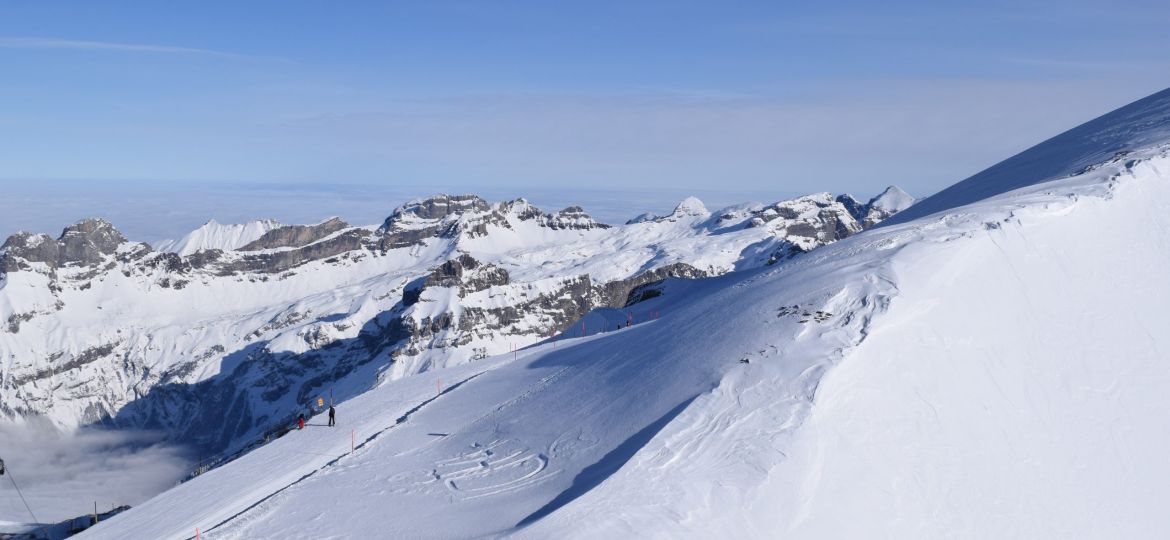
For advanced skiers, the real challenge often lies on the steeper slopes. The adrenaline you feel when you stand at the top of an impressive slope can be overwhelming, but also addictive. Steep descents not only offer a physical challenge, but also require mental acuity, technical precision and a good dose of self-confidence. In this article you’ll discover how to challenge yourself and ski safely on steeper slopes while taking your skills to the next level.
THE PSYCHOLOGY OF STEEP Descents
The idea of heading down a steep slope can make even the most experienced skier nervous. This fear is completely normal and can even be an advantage if you learn how to deal with it. Fear ensures that you stay alert and ski consciously, which is important on technically challenging slopes.
The key to success on steep slopes lies in your mental preparation. Visualize your descent before you start. Imagine yourself making the turns, controlling your speed and moving smoothly through the terrain. Practicing this process in your mind prepares your brain for action and reduces stress.
Breathing also plays a crucial role. By consciously breathing deeply in and out, you can calm yourself and regain your focus. Try to synchronize your breathing with your movements on the slopes – for example by inhaling when starting a turn and exhaling when rounding off.
THE TECHNICAL CHALLENGES OF STEEP SPIDES
Steep slopes bring unique technical requirements. The most noticeable difference is that you have less time to make decisions. This means that your responsiveness and technique must be at their best.
One of the most important aspects of steep slope skiing is mastering short, powerful turns. Unlike wider, flowing movements on less steep slopes, steep slopes require you to constantly control your speed. You do this by making fast, precise movements, making full use of your ski edges.
Your attitude is also crucial here. Many skiers make the mistake of leaning back for fear of falling forward. This can disrupt your balance and reduce your control. Instead, focus on a central position, with your weight distributed over your skis and your knees slightly bent.
THE INFLUENCE OF TERRAIN AND CONDITIONS
Steep slopes are not always the same. The challenge often depends on snow conditions, terrain and any obstacles such as bumps or icy spots.
On days with fresh snow, a steep slope may seem inviting, but deep snow makes it more difficult to control your speed and execute your movements precisely. In these conditions it is important to make wider turns and keep your skis light so they don’t sink too deep into the snow.
On icy slopes, on the other hand, it’s all about grip. Here it is essential to use your edges sharply and time your turns well. If you notice your skis starting to slip, stay calm and try to minimize your movements. Overcompensation can further disrupt your balance.
EXERCISES AND TECHNIQUES FOR STEPER slopes
Improving your skills on steep slopes often starts with specific exercises that help you build your technique and confidence.
A good exercise is to make controlled stops on a steep slope. This helps you to refine your balance and power transfer. Start on a moderately steep slope and practice stopping by placing your skis across the slope and applying pressure to the edges. As you become more comfortable, you can try this on steeper slopes.
Another useful technique is the “hockey stop.” You make a sharp turn and bring both skis to a stop at the same time. This is not only a good emergency technique, but also helps you gain more control over your movements.
WHERE CAN YOU PRACTICE STEEP SPIDES?
For advanced skiers who want to tackle steep descents, there are plenty of challenging destinations in the Alps. In Austria, ski areas such as St. Anton, Ischgl and Kitzbühel offer steep slopes that vary in difficulty. Here you can start on less extreme slopes and slowly build up to the black slopes.
In France, La Face de Bellevarde in Val d’Isère is known as one of the most challenging slopes, while in Switzerland the famous Piste Nationale in Verbier is an excellent option. Each of these locations offers not only technical challenges, but also spectacular views that complete your skiing experience.
SAFETY ABOVE ALL
While it can be tempting to push yourself to the limit, safety is always priority number one. Make sure you know your limits and never tackle an incline you don’t feel comfortable with.
Always wear a helmet and consider using a back protector, especially on steep slopes where falls can be more serious. Also check weather conditions and snow quality regularly before making a challenging descent.
Finally, it is important not to ski alone on steep slopes. Bring a partner or inform someone about your plans. This ensures that you can get help if you need it.
CONCLUSION: STEEPERS, BIGGER REWARDS
Skiing steep slopes is a challenge that combines technique, self-confidence and mental focus. It takes time and practice to become comfortable in this area, but the satisfaction is immense. Once you take control of your movements and enjoy the adrenaline of a perfect descent, you’ll understand why so many skiers continue to strive for new heights.
So strap on your skis, find that challenging slope and take that first turn – the top may be intimidating, but the reward at the bottom is more than worth it.

